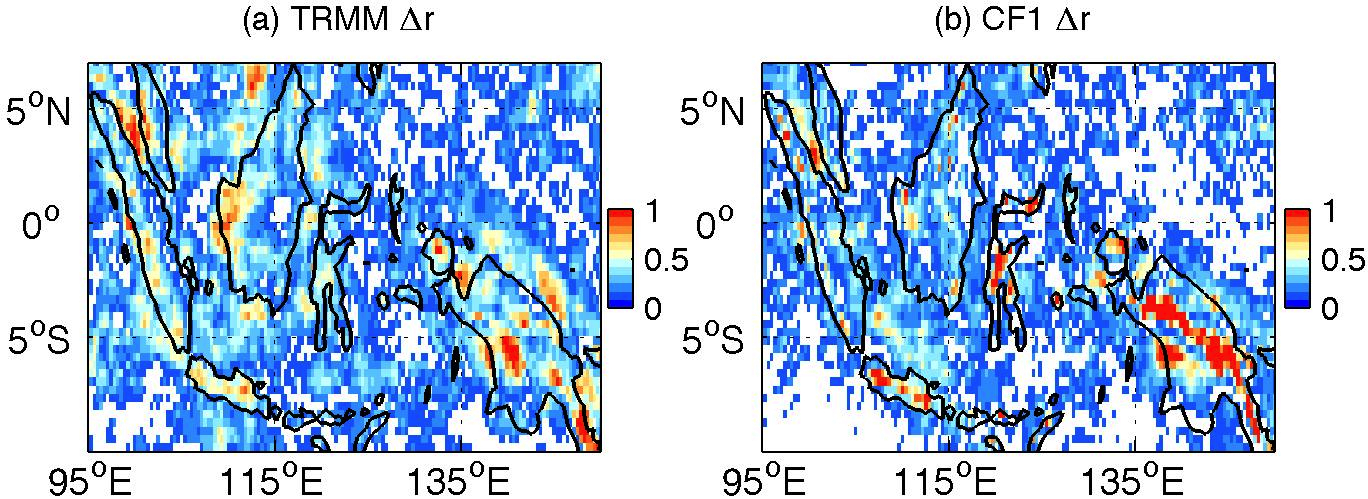NOAA CVP: Upper ocean processes in the Maritime Continent and their impact on the air-sea interaction and MJO predictability (2017-2020)
“Years of Maritime Continent (YMC)” is an international campaign which contains five scientific themes. The project we propose will focus primarily on upper ocean processes and their impacts on air-sea interaction, and thus will directly contribute to one of the themes “Ocean and Air-Sea Interaction”. The primary goal of the proposed study is to understand the role of upper ocean processes over the MC in diurnal to intraseasonal atmosphere-ocean-land interaction and the simulation and prediction of the tropical intra-seasonal variability including the MJO. Specific objectives are to:
- Determine the large-scale impact of the diurnal air-sea-land interaction on the simulation and prediction skill of the MJO propagation across the Maritime Continent (MC).
- Examine the impact of oceanic processes on diurnal and intraseasonal rainfall evolution and propagation over the Indonesian seas.
To achieve the goal described above, we will combine three different coupled models: NCEP CFS, the global NAVGEM/HYCOM system, and the regional WRF/ROMS model. A series of model simulations will be first conducted using NCEP CFS and the NAVGEM/HYCOM system to identify the impact of diurnal variation on MJO propagation through the MC. To assess the relative impact of the diurnal cycle over the land and the ocean on the regional intra-seasonal rainfall and the MJO simulations, predictability experiments will be carried out by selectively switching off the diurnal variations in land surface temperature and SST only in the MC domain. Model skills of prediction in each simulation will be examined to isolate the impact of diurnal variability on the prediction skill. The results will be compared with high-resolution regional WRF/ROMS simulations.
The WRF/ROMS system will downscale the CFS and NAVGEM/HYCOM simulations in a multi-nesting tropical channel configuration, with enhanced resolution in the MC domain up to an explicit convection scale (3-4 km). To examine the effect of upper ocean processes on air-sea interaction, we will conduct a series of sensitivity experiments. Various methods, which were used in previous studies, will be applied for WRF/ROMS experiments. From the experiments with two-way interaction between the nested MC domain with explicit convection and the parent tropical channel domain at a coarser resolution, we will assess the upscaling impact of the MC regional processes on the MJO. The combined global and regional coupled model simulations will identify “hot spots” within the MC with the strongest air-sea-land coupling, where the MJO simulation and forecast skill are most sensitive to.
NOAA YMC: $690,000 total, 2017-2010
Toshiaki Shinoda, Department of Physical and Environmental Sciences, Texas A&M University, Corpus Christi
Hyodae Seo, Woods Hole Oceanographic Institution
Wanqiu Wang, NOAA NCEP
